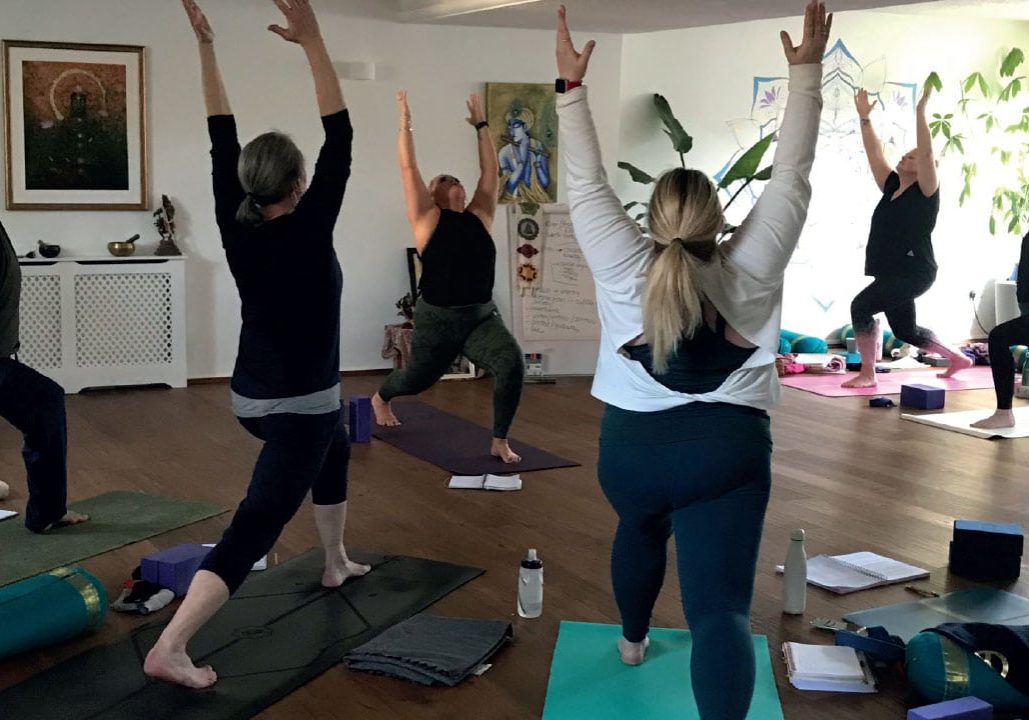
Core skills
What are the core skills you should cover on a yoga teacher training course? By Jacqueline Godfrey
Training to teach yoga is a huge investment, in terms of your time, energy and of course, your hard-earned money. It is not to be taken lightly as any course you choose will help shape you into the teacher that you become. Choosing carefully, with a balance between your heart and your head is vital to ensure you receive a solid grounding from which to teach.
With close to two decades worth of yoga trainings, in the roles of trainee, mentor and trainer, I have put together some of the core aspects which I feel are essential in a YTT.
My own initial 200 hours training was spent far away from home in the Keralan jungle, in a sacred ashram setting. Every day began rigorously at 5am with meditation in an open-sided temple. Each day was steeped in Vedantic philosophy, Sanskrit chanting and spiritual discourses, surrounded by statues of deities and the more than occasional mosquito. Physical practices involved traditional asana but also pranayama and kriya. Karma yoga was an integral part of the experience and every trainee had a daily job to do around the ashram. This training gave me a huge respect for the origins of yoga and yet, whilst I personally thrived in and loved this immersive atmosphere, it was super-tough and not everyone was as beguiled as me by the emphasis on the many hours of philosophy and spirituality. This training provided anatomy lessons but these were academic and pretty dry, as opposed to practical and engaging.
I subsequently took a variety of different trainings: one, in particular, which introduced me to the world of biomechanics and functional anatomy. This level of practicality is incredibly valuable in order to have a really solid grounding in the way different bodies work. You are never going to see identikit students in your class. This will improve your confidence and versatility as a teacher, enabling you to really ‘see’ the students in front of you and help them practice confidently with their different bodies.
Some skills which should be included are ‘subtle’ skills that cannot be seen or measured tangibly but which provide you as a yoga teacher with a strong bedrock of integrity and presence and thereby adding maturity to your teaching. In the 200 hours course which I run, trainees work on the concept of ‘holding space’, which is not so much something to ‘do’ but it is the art of elevating your own energy and presence to a level where you are able to calmly and effectively offer energy and support to those around you.
Learning the actual skill of teaching is, of course, an absolute non-negotiable. There is more to it than appears and it takes a lot of practice. By the time you decide to undertake a teacher training, the chances are you feel that your own life has been changed by yoga for the better. The best trainings should therefore enable you to be able to share generously, whether this means in terms of meditation, pranayama, mindfulness, philosophy, whether traditional or not.
As a trainee you want to feel you are in competent and caring hands and to get honest, regular feedback on how you are doing. Knowing that you will have access to your teacher(s) and or mentors and teaching assistants at certain times (whether in person or by way of ongoing communication) is extremely important.
Here are the core components which go towards a well-balanced yoga training:
1. Lots of regular teaching practice in which you are regularly given feedback from teachers, mentors and peers on all skill components.
2. A thorough grounding in practical (functional) anatomy and the bio-mechanics of the body – this is a great way to feel more confident about teaching all shapes of body and different abilities. The course must also include learning contra[1]indications to ensure student safety.
3. A range of yoga philosophy to ensure you are equipped to teach from a place of knowledge about yoga’s origins. You will in time find your own way to convey the essence of yoga, which may be either traditional or contemporary.
4. Pranayama and meditation. There must be some component on how to teach these effectively. Yoga is not just asana.
5. ‘Subtle’ skills, such as holding space and ‘the voice of the teacher’ – these add layering to your teaching which improve confidence. Being able to ‘read the room’ and pick up on the energy of your students takes practice.
6. Ethics and diversity. Taking on the role of a yoga teacher places you into a position of trust and you will encounter a wide variety of dilemmas over time. Working with these in a safe environment helps prepare you.
7. Hands-on work. If you envisage being a teacher who is able to offer effective ‘hands-on assists’, any training you choose should include learning this skill.
8. Essential core business skills and regulation of the profession, such as the laws of confidentiality, maintaining client records, how to set up as self-employed, dealing with tax obligations and how to invoice etc. These are surprisingly missing from some trainings but are essential to know if you are about to embark on a career teaching yoga.
9. Look for an inspiring and encouraging vibe which feels right to you, ignites your passion and keeps you engaged and supported.
Jacqueline Godfrey is a senior yoga teacher and teacher trainer based in Saffron Walden, Essex and leads a nine-month-long 200hr in-person training, together with a faculty of teachers and mentors. Contact: hello@jacquelinegodfreyyoga.co.uk


